RVA Group’s managing director Richard Vann recently spoke with Demolition Hub about the importance of safety within the demolition sector, and why this is non-negotiable.
In case you missed it, catch up on the article below.
A demolition project doesn’t end as soon as a structure is brought to the ground. By their very nature, processing environments harbour inherent hazards that can pose significant risks to both the environment and human health. Site restoration is therefore a crucial facet in finalising any successful decommissioning exercise.
While it signifies the latter stages of a site’s operational lifespan, this phase also opens doors for the space to be revitalised for a range of possible uses. But remediating contaminated land often represents just as many uncertainties as the earlier phases of an asset’s lifecycle. So, how can contractors ensure a seamless transition from demolition to regeneration?
Plan for different outcomes
Knowing there’s rarely only one possible route map, conducting feasibility and option studies — when undertaken by an experienced demolition professional — empowers clients to make more informed decisions throughout every stage of the project, including remediation.
A number of strategies — from interviewing former operators to reviewing historical sources and public records — will help determine the past uses of a site, for example. This is important when redeveloping land previously used by a chemical or industrial plant, where a number of contaminants could be present.
Having a firm grasp on the materials used during construction and throughout operation, as well as knowing the condition of the site, for example, could uncover the presence of hazardous waste such as asbestos, or pollutants like arsenic and mercury. Manual intervention can help deal with the challenge at source, without breaking containment. However, if it is revealed after testing that such hazards have also impacted the integrity of soil or groundwater, targeted remediation strategies will be required to ensure the safety of surrounding ecosystems and communities.
Of course, planning for every eventuality is virtually impossible — not least when dismantling assets the size of a power station, with decades-old infrastructure and often limited documentation. As such, the process must remain dynamic and flexible at all times.
Foster collaboration at every stage
At RVA Group, we’ve long talked about the importance of a tripartite alliance between client, contractor, and someone like us, acting as the independent consultant. Recognising that no single party possesses all-encompassing knowledge, this alliance fosters collaboration and innovation throughout the project lifecycle. However, it’s especially crucial during the remediation phase, where regulators and landowners assess the standard of environmental cleanup efforts before a project can be deemed complete — without incurring unnecessary penalty costs.
By assembling a skilled remediation team and supervising this phase, a consultant will ensure pollution is eradicated and the restoration of land is completed to an agreed state, within budget — paving the way for an exciting future for the site, once again. Meanwhile, a contractor may introduce innovative technologies that streamline the project timeline and enhance safety measures, accelerating the restoration process. Alternatively, they may offer specialised expertise in waste management strategies, further bolstering the environmental sustainability of the remediation methodology employed.
Ultimately, collaboration means ideas are harnessed from the outset, and plans are continually validated and adjusted as needed.
Prioritise safety and compliance until the final hour
Once an asset reaches its operational life, decommissioning, demolition and remediation will form part of a phased programme of closure of works. When complete, the operator will apply to surrender a number of environmental permits — depending on factors such as the site’s former use and local legislation — to confirm that it has been returned to a satisfactory state and is ready for further operational use, where possible.
In cases where the land is leased rather than owned, additional conditions may also be imposed on the remediation process. Meeting ever-evolving and increasingly stringent compliance requirements is crucial to prevent costly fines that could financially burden the project.
Keeping health and safety in sharp focus until absolute conclusion is vital too — something we’re constantly talking about at RVA Group. Frameworks such as the EU Directive 57/92, as well as the compliance with Construction (Design and Management) Regulations (CDM) in the UK, exist to regulate management until the final hour. However, in reality, many legislative requirements only establish the minimum benchmark for site safety protocol. Therefore, regardless of the phase of works, adherence to best practices remains imperative to ensure the safety of personnel and surrounding communities.
Think long-term
It is crucial to be cognisant of the future use of the site during the remediation process, where possible. If it is going to remain industrial for example, then the remediation regime would be different compared to if it is destined to be developed for residential or leisure use.
With long-term vision and strategic planning in large-scale remediation projects, clients can realise tangible benefits for both industry and society. A decade-long project — amounting to 1.2 million safe work hours — recently drew to a close in collaboration with petrochemical giant SABIC, whereby RVA Group supported six different contractor firms to demolish, decommission, and remediate the firm’s 54-hectare site on Teesside.
A staggering 58,500 tonnes of scrap have been salvaged for reuse or remanufacturing since the project began, achieving a 98% recycling rate, with 44,000 tonnes of additional waste – including 8,750 tonnes of asbestos – managed responsibly in line with the waste hierarchy.
With the equivalent of 270 football pitches now cleared, the facility paves the way for potential industrial development, contributing to Teesside’s regeneration, attracting investors, and creating job opportunities. SABIC’s dedication to safety also translates into charitable contributions, benefitting local causes and reinforcing its commitment to the community.










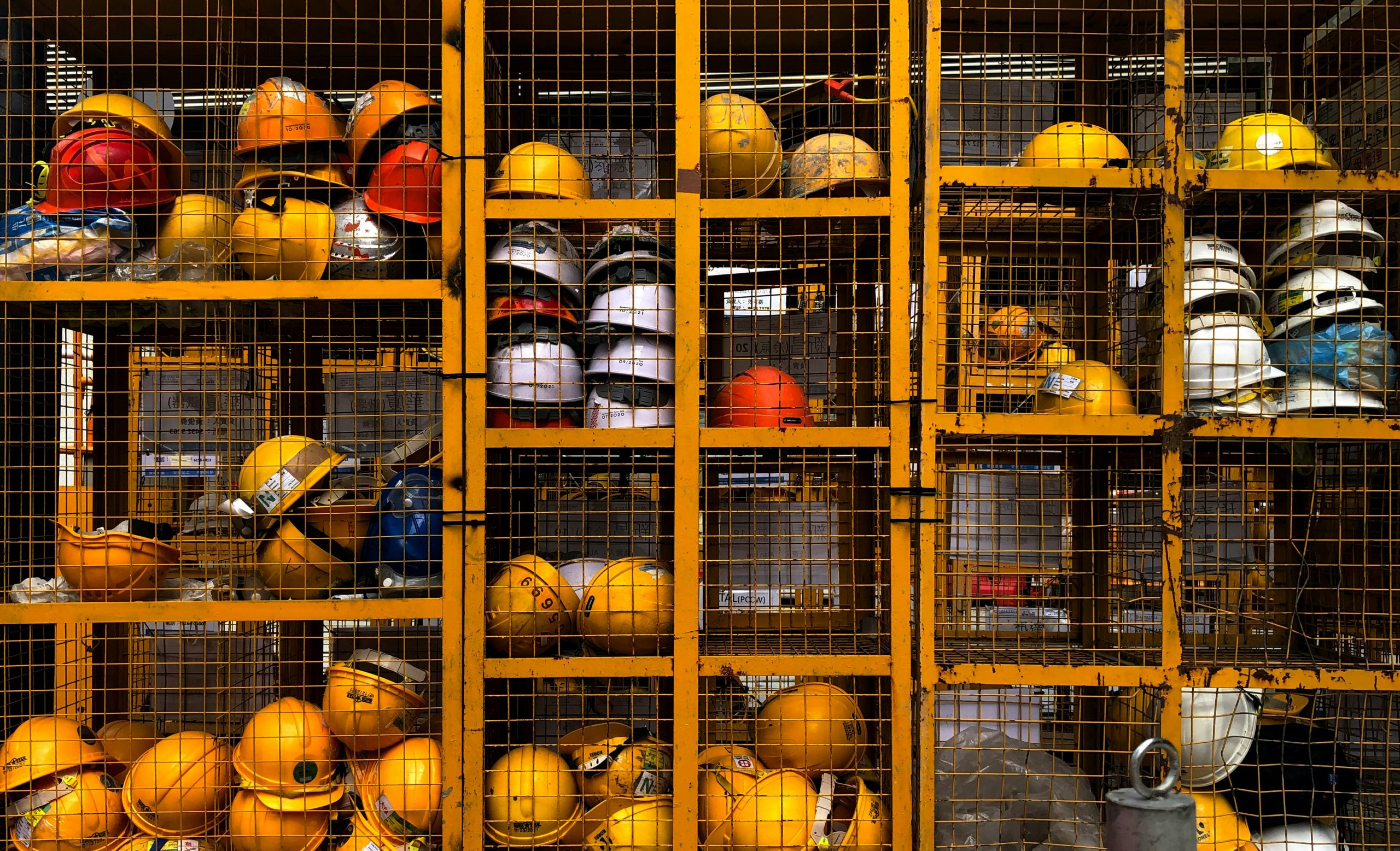
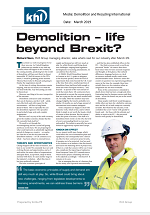 In the latest edition of Demolition and Recycling International, RVA’s managing director Richard Vann gives his thoughts on what’s in store for the world of demolition post-Brexit.
In the latest edition of Demolition and Recycling International, RVA’s managing director Richard Vann gives his thoughts on what’s in store for the world of demolition post-Brexit.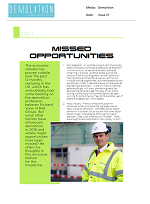 In issue 27 of Demolition, our managing director Richard Vann provides his thoughts in an exclusive feature on the missed opportunities within and around the demolition industry.
In issue 27 of Demolition, our managing director Richard Vann provides his thoughts in an exclusive feature on the missed opportunities within and around the demolition industry.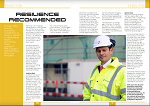 In the 2019 Demolition Directory, our Managing Director Richard Vann shares his thoughts and advice on how demolition businesses need to adapt and evolve in order to succeed.
In the 2019 Demolition Directory, our Managing Director Richard Vann shares his thoughts and advice on how demolition businesses need to adapt and evolve in order to succeed.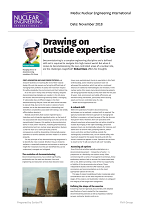 In November’s edition of Nuclear Engineering International, Richard Vann offers his thoughts on the challenges you may face decommissioning the non-controlled area of a nuclear site.
In November’s edition of Nuclear Engineering International, Richard Vann offers his thoughts on the challenges you may face decommissioning the non-controlled area of a nuclear site.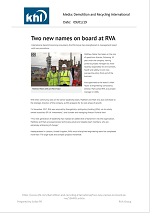 Industry headlines share the news of RVA’s strengthened management team, with two promotions.
Industry headlines share the news of RVA’s strengthened management team, with two promotions.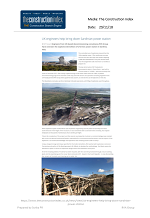
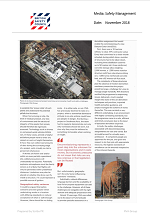
 In October’s edition of IOSH Magazine, RVA’s managing director Richard Vann provides his insight into the five key elements to a successful demolition project.
In October’s edition of IOSH Magazine, RVA’s managing director Richard Vann provides his insight into the five key elements to a successful demolition project.